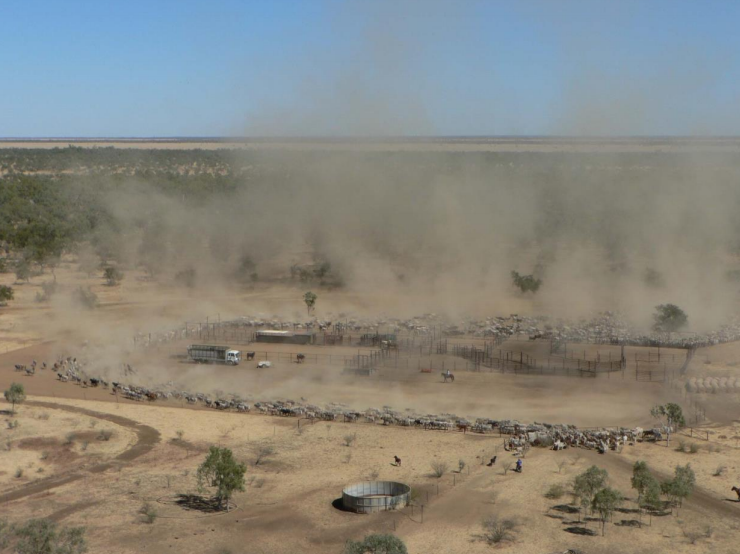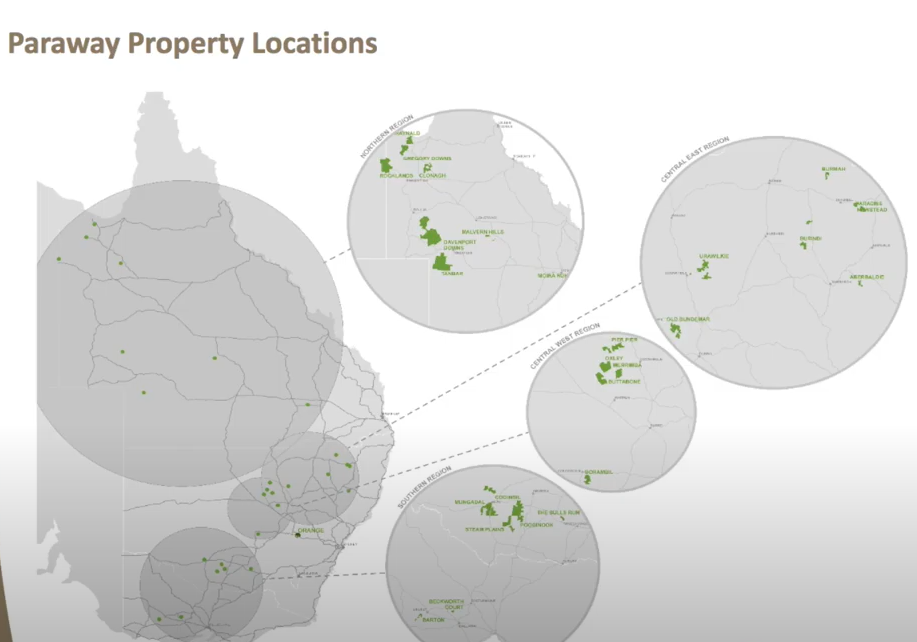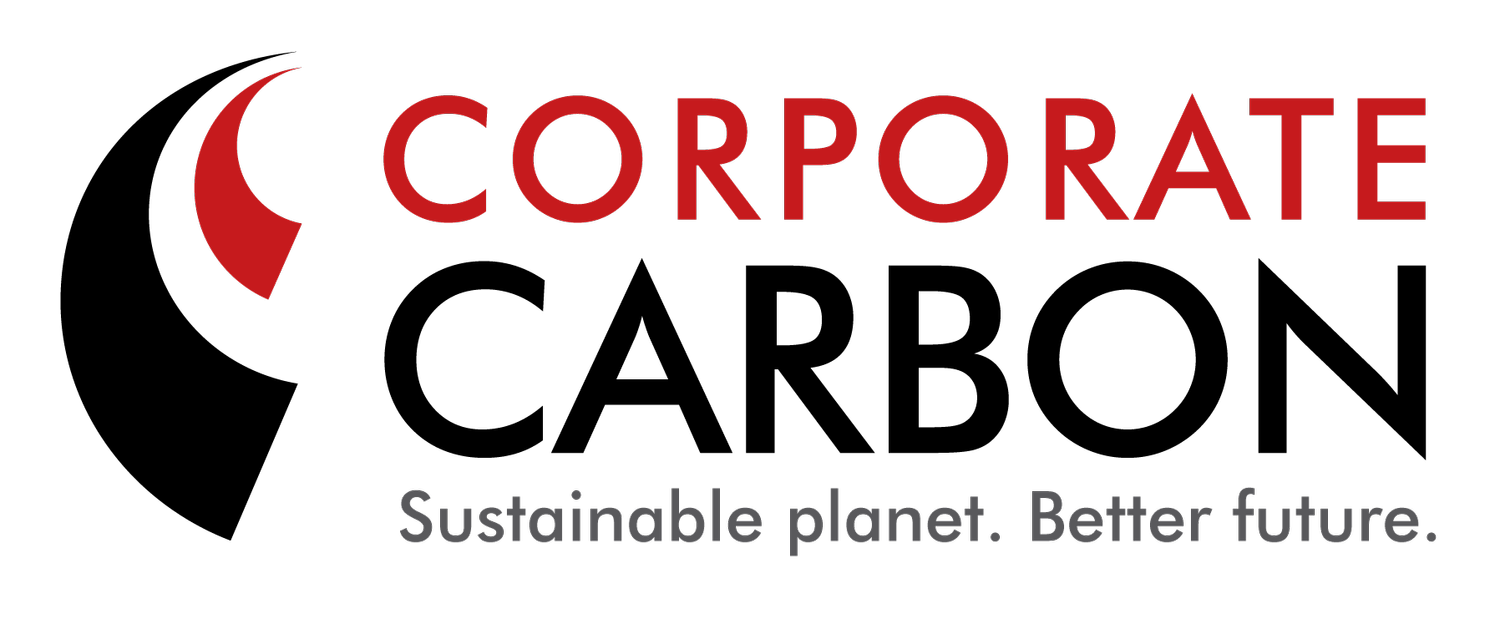
Paraway Pastoral Beef Herd Management Project
Beef Cattle Herd Management
Project overview: how is carbon abated?
Beef cattle herd management
This method consists of activities that impacts the herd’s emissions or productivity (or both). Such as:
supplement feeding
installing new fences
planting improved pastures
improving herd genetics
increasing density of water points.
Beef cattle are eligible if they are:
grazed in Australia
fed principally from grazing or forage, and
managed in a way consistent with ANZIC classes 0142, 0144, or 0145.
Feedlots are specifically excluded.
Reducing emissions intensity
Beef Cattle Herd Management projects aim to reduce the emissions intensity of grazing beef cattle (i.e. cattle emissions per kilogram of liveweight produced) by reducing emissions, improving productivity or both.
Eligible activities include:
increasing the ratio of weight to age of the herd
reducing the average age of the herd
reducing the proportion of unproductive animals in the herd, and
changing the ratio of livestock classes within the herd (e.g. reduce breeder/weaner ratio).
Calculating emissions
Each herd must have historical data to establish a benchmark for the Emissions Intensity Reference Period (EIRP).
The ERIP typically covers the 3 years immediately prior to the start of the project.
Net abatement per year is determined using the difference between the projected baseline using the historical emissions intensity benchmark (minus 4% p.a. - a discount included to reflect expected improvements in absence of the project) and the actual emissions after implementation of activities.
The 4% discount accounts for a variation to emissions due to environmental factors beyond the participant’s control.
Carbon abatement
Abatement is the reduction of greenhouse gas emissions achieved by a project. It is measured in tonnes of carbon dioxide equivalent.
A project earns Australian Carbon Credit Units (ACCUs) for every tonne of carbon abatement it achieves.
Project registration
The Paraway Beef Herd Management Project is the first registered beef cattle herd project under the Emissions Reduction Fund, now Climate Solutions Fund.
The project has been so successful since implementation in 2016 that the company is registering another project.
An additional 50,000 head of cattle will be registered as part of the projects aggregation model.
The Paraway Beef Herd Management Project
The project, using the Beef Cattle Herd Management method, reduces the emissions intensity of beef cattle production by reducing cattle emissions per kilogram of live weight gain produced.
This was achieved by:
reducing the average number of days from birth to slaughter in the herd
reducing the average age of a herd
reducing the proportion of unproductive animals in the herd, and/or
changing the number of animals in each livestock class in the herd.
Locations
The project is entirely based and grazed in Australia and is an aggregation project across multiple project sites.
Paraway Pastoral Company Limited is the primary business operation for the Paraway herd.
The project comprises of 10 herds.
With 5 in New South Wales
and 5 in Queensland
The herds are fed principally from grazing or forage with little or no supplementary feeding.
Project operations and outcomes
Paraway Pastoral
The company began in 2007 with operations in Sydney. By 2015 the business had increased profits by 12 times the base level and employees from 5 to 200.
Paraway currently has over 220 employees and has increased its market value and property ownership significantly. More than double financial value since 2015.
The company’s project was successfully contracted by the Clean Energy Regulator at the April 2016 auction to deliver carbon abatement over the following 7 year period.
Number of cattle on the baseline reference day:
53,246
Establishing the project
The business is committed to sustainable land management and responsibly managing the beef herd to:
reduce environmental impacts, and
maximise long term profit.
Generating ACCUs as part of the project enables the business to bring forward production improvements due to the income made.
There are a range of social and environmental co-benefits created from the project.
The project was established with Natural Carbon in conjunction with Corporate Carbon.
Corporate Carbon has the rights to wholesale ACCUs from this project.
Beef herd data
Herd data, including livestock numbers, live weight, live weight gain class, date of entry and exit or discovery in the herd, in accordance with Part 3, section 16, of the Methodology Determination, was provided by the project proponents.
Credits to date:
128,971 ACCUs.
Emissions abatement has increased over time:
2016-17: 22,604 tonnes carbon dioxide-equivalent
2017-18: 39,238 tonnes carbon dioxide-equivalent
2018-19: 66,079 tonnes carbon dioxide-equivalent.
Project structure
Using a carbon project developer made the process feasible for Paraway.
To establish the process:
Step 1: Feasibility
Responsibility: Natural Carbon with Paraway
Step 2: Project registration
Responsibility: Natural Carbon with Paraway
Step 3: Pre-project audit
Responsibility: Natural Carbon, Auditor, Paraway
Step 4: Contracts exchange
Responsibility: Corporate Carbon, Natural Carbon, Government, Paraway
Step 5: Auction bid
Responsibility: Corporate Carbon with Paraway
Step 6: Implement new management actions
Responsibility: Paraway Station Managers
Step 7: Weighing 12% stock annually
Responsibility: Paraway Station Managers
Step 8: Annual reporting
Responsibility: Natural Carbon with Paraway
Step 9: Annual payment
Responsibility: Government
Step 10: Audits
Responsibility: Natural Carbon with Paraway.
Project opportunities
The project has become a catalyst to review business operations and development options.
It has enabled development programs to be fast tracked.
Paddocks have been sub divided and had additional watering points added to increase grazing efficiencies.
The scale of the project has become advantageous because an option to reduce paddock size and increase the number of watering points has been presented.
Adjusting and changing existing management practices has presented a range of productivity and profitability outcomes.
Overall heard efficiency has been identified.
Project activities
Fencing improvements:
allows for improved pasture management.
Bull genetics and pregnancy testing:
includes selecting bulls using estimated breeding values
implementation of a new pregnancy machine that allows testing for pregnancy to be undertaken with less stress for the animal.
Water point, pipeline and water trough:
leads to reduced distance to water, which allows more time for grazing.
New project practices
Armraynald- agricultural practice ‘increasing the ratio of weight to age of the herd’:
Removing weeds and plan grazing accordingly to improve overall land condition. This will enable desirable productive pasture species to regenerate and proliferate.
High quality pasture increases animal production per kilogram of dry matter intake.
Enables bluegrasses.
Pasture budgeting.
Gregory Downs- agricultural practice ‘increasing the ratio of weight to age of the herd’:
Fencing enables controlled grazing of land types essentially leading to higher quality pasture.
High quality pasture increases animal production per kilogram of dry matter intake.
Clonagh- agricultural practice ‘increasing the ratio of weight to age of the herd’:
Strategic fencing enables controlled grazing of land types. Fencing will essentially lead to more evenly grazed pasture resulting in higher quality pasture.
High quality pasture increases animal production per kilogram of dry matter intake.
Davenport Downs- agricultural practice ‘increasing the ratio of weight to age of the herd’:
Davenport Downs being a grower (not breeder) business, and usually purchases branded cattle. In previous years when branding was required it was done without pain relief.
Administering pain relief will ensure animals to be more comfortable, encouraging them to eat and significantly reduce weight losses associated with no pain relief.
Malvern Hills- agricultural practice ‘purchase of younger cattle’:
Protecting pastures to re-establish ground cover. Younger and smaller animals have lower maintenance requirement and will continue to put on weight on the available feed.
Larger animals will not put on weight under these circumstances due to their larger maintenance requirements.
Burindi- 'agricultural practice ‘DNA testing of heifer weaners’:
More productive heifers will produce more calves with higher weaning rates.
Oxley- agricultural practice ‘strategic boxthorn control’:
Cattle won't have to walk as far from watering points to access shade, hence more energy available for animal production.
Removing weeds and planned stocking paddocks will also enable desirable productive pasture species to regenerate and proliferate.
High quality pasture increases animal production per kilogram of dry matter intake.
Merrimba- agricultural practice ‘destocked’:
Not applicable due to cattle removal as a result of drought.
This occurrence was for the most recent offset report.
Buttabone- agricultural practice ‘additional water points’:
Improved pastures are of better nutritional quality and result in increased cattle growth rates.
Pier Pier- agricultural practice ‘destocked’:
Not applicable due to cattle removal as a result of drought.
This occurrence was for the most recent offset report.
Co-benefits: productivity and profitability
Paul McDougall, Environment and Sustainability Manager at Paraway Pastoral, provides a presentation about Paraway's experience as a herd aggregation using the Emissions Reductions Fund's Beef Cattle Herd Method to gain ACCUs on the carbon market.





Co-benefits: livestock conditions
On Emissions and Beef Cattle: A Carbon Project Developer Perspective
There are a number of ways to look at how and why livestock produce emissions and are often the face of the climate change debate. Rather than taking an extreme perspective on beef cattle, a balanced view may assist us in finding climate solutions that allow us to live a life congruent with nature.



Project overview: United Nations Sustainable Development Goals (UN SDGs)
Zero hunger
The project activities assist with agricultural practices by managing cattle on property. This process enables the reduction of emissions and has seen an uplift of productivity and production across operations.
The activities align with the following UN SDG targets and indicators:
Target
2.4: By 2030, ensure sustainable food production systems and implement resilient agricultural practices that increase productivity and production, that help maintain ecosystems, that strengthen capacity for adaptation to climate change, extreme weather, drought, flooding and other disasters and that progressively improve land and soil quality.
Indicators
2.4.1: Proportion of agricultural area under productive and sustainable agriculture.
Decent work and economic growth
The diversification of income sources that has been generated through the implementation of projects has provided a growth in the business.
The additional on-job training and expertise that has been implemented has assisted in achieving employment outcomes while reducing environmental impacts.
The activities align with the following UN SDG targets and indicators.
Target
8.2: Achieve higher levels of economic productivity through diversification, technological upgrading and innovation, including through a focus on high-value added and labour-intensive sectors.
Indicators
8.2.1: Annual growth rate of real GDP per employed person.
Target
8.4: Improve progressively, through 2030, global resource efficiency in consumption and production and endeavour to decouple economic growth from environmental degradation, in accordance with the 10-year framework of programmes on sustainable consumption and production, with developed countries taking the lead.
Indicators
8.4.1: Material footprint, material footprint per capita, and material footprint per GDP.
Infrastructure and equipment
The retrofit of farming infrastructure , in particular fences and water sources has a direct effect on the grazing processes of the livestock. This thereby has a direct alignment with a reduction in emissions, as highlighted in the methodology.
The activities align with the following UN SDG targets and indicators.
Target
9.4: By 2030, upgrade infrastructure and retrofit industries to make them sustainable, with increased resource-use efficiency and greater adoption of clean and environmentally sound technologies and industrial processes, with all countries taking action in accordance with their respective capabilities.
Indicators
9.4.1: CO2 emission per unit of value added.
Climate action
>125,000 tonnes of carbon dioxide equivalent have been reduced through the project activities. This process was initiated in collaboration with the incentives that the government’s Climate Solutions Fund provides.
The activities across all properties provide a positive impact further abroad, inclusive of international emission reduction targets.
The activities align with the following UN SDG targets and indicators.
Target
13.1: Strengthen resilience and adaptive capacity to climate-related hazards and natural disasters in all countries.
Indicators
13.1.3: Proportion of local governments that adopt and implement local disaster risk reduction strategies in line with national disaster risk reduction strategies.
Target
13.2: Integrate climate change measures into national policies, strategies and planning.
Indicators
13.2.1: Number of countries that have communicated the establishment or operationalisation of an integrated policy/strategy/plan which increases their ability to adapt to the adverse impacts of climate change, and foster climate resilience and low greenhouse gas emissions development in a manner that does not threaten food production (including a national adaptation plan, nationally determined contribution, national communication, biennial update report or other).
Target
13.3: Improve education, awareness-raising and human and institutional capacity on climate change mitigation, adaptation, impact reduction and early warning.
Indicators
13.3.2: Number of countries that have communicated the strengthening of institutional, systemic and individual capacity-building to implement adaptation, mitigation and technology transfer, and development actions.
Life on land
The land on the property is protected through the management of beef herd and pasture grazing across the land.
Reductions in the impacts is having a positive effect across the 10 properties.
The activities align with the following UN SDG targets and indicators.
Target
15.1: By 2020, ensure the conservation, restoration and sustainable use of terrestrial and inland freshwater ecosystems and their services, in particular forests, wetlands, mountains and drylands, in line with obligations under international agreements.
Indicators
15.1.1: Forest area as a proportion of total land area.
15.1.2: Proportion of important sites for terrestrial and freshwater biodiversity that are covered by protected areas, by ecosystem type.
Target
15.2: By 2020, promote the implementation of sustainable management of all types of forests, halt deforestation, restore degraded forests and substantially increase afforestation and reforestation globally.
Indicators
15.2.1: Progress towards sustainable forest management.
Target
15.5: Take urgent and significant action to reduce the degradation of natural habitats, halt the loss of biodiversity and, by 2020, protect and prevent the extinction of threatened species.
Indicators
15.5.1: Red List Index
Target
15.8: By 2020, introduce measures to prevent the introduction and significantly reduce the impact of invasive alien species on land and water ecosystems and control or eradicate the priority species.
Indicators
15.8.1: Proportion of countries adopting relevant national legislation and adequately resourcing the prevention or control of invasive alien species.
Target
15.9: By 2020, integrate ecosystem and biodiversity values into national and local planning, development processes, poverty reduction strategies and accounts.
Indicators
15.9.1: Progress towards national targets established in accordance with Aichi Biodiversity Target 2 of the Strategic Plan for Biodiversity 2011-2020.
Sources of demand for ACCUs
There are multiple possible sources of demand for the Australian carbon credit units (ACCUs) generated by Emissions Reduction Fund projects, including:
Voluntary markets
State and territory governments.
For more information about the sources of demand for ACCUs, see the Clean Energy Regulator’s presentation “Sourcing ACCUs in the market”.
Emissions Reduction Fund auctions
Emissions Reduction Fund participants with a registered project may bid for a contract to sell their Australian carbon credit units to the Clean Energy Regulator. The Clean Energy Regulator will run auctions to select bidders according to price.
Contract holders may also purchase ACCUs from un-contracted projects to meet contractual obligations.
Safeguard mechanism
Under the safeguard mechanism, particular facilities are required to keep their emissions at or below a baseline set by the Clean Energy Regulator.
Safeguard facilities who exceed their emissions baseline are able to surrender ACCUs to offset excess emissions.
Both Kyoto and non-Kyoto ACCUs can be used as credits under the safeguard mechanism.
Read more about the safeguard mechanism.
Other markets
Organisations may wish to voluntarily offset their emissions for meeting certification under the Climate Active Carbon Neutral Certification Standard (formerly the National Carbon Offset Standard).
State and territory governments are also seeking to be carbon neutral and may source ACCUs to offset their emissions.
Purchasing ACCUs from the Paraway Pastoral Beef Herd Management Project
Corporate Carbon Advisory have the rights to sell/retire ACCUs for this project. This includes the right to bid for an auction contract and to sell it as a credit on the voluntary market to assist organisations in meeting certification under Climate Active, or similar, standards.
Contact the team to learn about current availability of Paraway Pastoral Beef Herd Management Project ACCUs.
Paraway Properties
A unique opportunity to learn more about the Paraway operations is provided by the team. Paraway has a number of community engagement activities at property locations that are part of this project.
Learn more about community engagement activities.
All photographs and content have been approved for use on this webpage.













